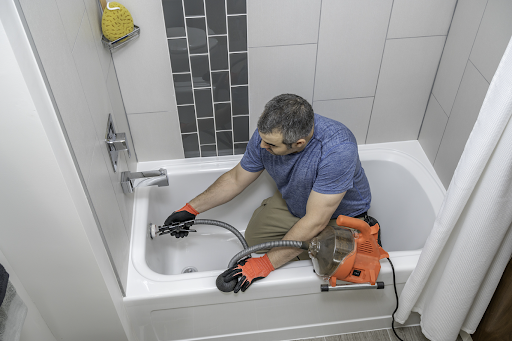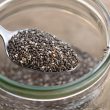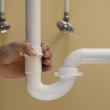Blocked bath drains are a common household issue that can lead to a slow draining bathtub, creating inconvenience and potential hygiene problems. Understanding the causes behind these blockages is the first step in finding effective solutions. For more detailed information and professional assistance with your bathtub and shower drain issues, don’t hesitate to visit https://www.montreal5stardrain.com/bathtubs-showers.php.
Table of Contents
Common Causes of Blocked Bath Drains
- Hair Accumulation: One of the most frequent culprits, hair can bind with soap scum and other debris, leading to significant blockages.
- Soap Scum Buildup: Over time, soap can accumulate, narrowing the drain and restricting water flow.
- Foreign Objects: Small objects accidentally dropped into the drain can cause immediate blockages.
DIY Solutions for Unclogging Bathroom Tub
- Boiling Water: Simple yet effective, boiling water can dissolve soap scum and loosen minor blockages.
- Plunger Method: Using a plunger can create pressure that dislodges blockages.
- Baking Soda and Vinegar: A natural alternative to chemical cleaners, this combination can break down blockages effectively.
Professional Solutions for Persistent Blockages
When DIY methods fail, it’s time to consider professional intervention. Companies like Montreal 5 Star Drain offer specialized services to tackle tough blockages.
Advanced Techniques Used by Professionals
- Motorized Drain Snakes: These tools can reach deeper into the plumbing to remove stubborn blockages.
- Hydro-Jetting: A powerful method that uses high-pressure water to clear out blockages and clean the drain walls.
- Camera Inspection: Professionals may use cameras to identify the exact location and nature of the blockage.
Preventative Measures for a Clean Bathtub Drain
Prevention is key to avoiding blocked bath drains. Regular maintenance can save time and money in the long run.
Tips for Maintaining a Clear Drain
- Regular Cleaning: Regularly clean the drain to prevent buildup of hair and soap scum.
- Use Drain Guards: These can catch hair and other debris before they enter the drain.
- Avoid Chemical Cleaners: Overuse of harsh chemicals can damage pipes over time.
Comparing DIY and Professional Drain Cleaning
Understanding when to use DIY methods and when to call professionals like Montreal 5 Star Drain is crucial for effectively managing a blocked bath drain.
| Method | DIY Solutions | Professional Services |
| Cost | Low | Higher |
| Effectiveness | Good for minor blockages | Necessary for severe blockages |
| Risk | Low risk of damage | Professional handling reduces risk |
| Longevity | Short-term solution | Long-term solution |
The Role of Regular Maintenance in Drain Health
Regular maintenance is not just about preventing blockages; it’s about ensuring the longevity and health of your plumbing system.
Simple Steps for Regular Drain Care
- Weekly Cleaning: A weekly rinse with hot water can keep the drain clear.
- Monthly Check-ups: Inspect your drain monthly for any signs of slow drainage.
- Professional Inspection: Annual inspections by professionals can identify potential issues early.
The Environmental Impact of Drain Cleaners
While addressing a blocked bath drain, it’s also important to consider the environmental impact of the methods used. Chemical drain cleaners, though effective, can have negative consequences.
Eco-Friendly Alternatives for Unclogging Drains
- Enzymatic Cleaners: These biodegradable cleaners use natural enzymes to break down organic matter in drains.
- Homemade Solutions: Mixtures like baking soda and vinegar are not only effective but also eco-friendly.
- Manual Tools: Plungers and drain snakes remove blockages without any chemical impact.
Understanding the Plumbing Behind Your Bathtub
A deeper understanding of your bathtub’s plumbing can be invaluable in both preventing and addressing blockages.
Anatomy of Bathtub Plumbing
- Drain and Overflow: These are the primary pathways for water to exit the tub.
- P-Trap: This curved pipe section traps debris and prevents deep clogs.
- Vent System: Proper venting ensures water flows smoothly and prevents vacuum formation.
When to Replace Parts of Your Bathtub Drain
Sometimes, the issue with a slow draining bathtub isn’t just a blockage but a need for part replacement.
Signs That Indicate Replacement is Needed
- Persistent Clogs: If clogs recur frequently, it might be time to replace certain parts.
- Visible Damage: Cracks or corrosion in the drain or surrounding area can necessitate replacement.
- Outdated Components: Older plumbing might not be as efficient or compatible with modern fixtures.
The Importance of Professional Diagnosis
While many blockages can be handled at home, a professional diagnosis can sometimes be the key to identifying and solving complex issues.
Benefits of a Professional Assessment
- Accurate Identification: Professionals can accurately identify the root cause of the problem.
- Appropriate Solutions: They can recommend the most effective solutions, whether it’s a simple fix or a complete overhaul.
- Preventative Advice: Experts like Montreal 5 Star Drain can provide tips on preventing future issues.
FAQs on Blocked Bath Drains
Addressing common questions can help clarify doubts and provide quick guidance.
Top Questions Answered
- How often should I clean my bathtub drain?
- Regular cleaning should be done weekly, with a deeper clean monthly.
- Can I use a wire hanger to unclog my drain?
- While a wire hanger can be used as a makeshift tool, it’s less effective and riskier than proper tools.
- Are chemical drain cleaners safe for all pipes?
- Chemical cleaners can damage certain types of pipes and are generally not recommended for frequent use.
The Role of Water Quality in Drain Health
Water quality can significantly impact the likelihood of blockages in your bathtub drain.
How Water Quality Affects Your Drain
- Hard Water: High mineral content can lead to deposits that narrow pipes and contribute to blockages.
- Chemical Composition: Certain chemicals in water can react with soap or other materials, increasing the risk of clogs.
Final Thoughts on Managing Blocked Bath Drains
Managing a blocked bath drain effectively requires a balance of knowledge, the right tools, and sometimes professional assistance. By understanding the causes, exploring both DIY and professional solutions, and engaging in regular maintenance, you can ensure that your bathtub remains a place of relaxation and cleanliness, not stress and blockages.
Remember, the key to a smoothly functioning drain is not just in how you respond to blockages, but in how you prevent them. Regular care, awareness of the products you use, and understanding the signs that indicate deeper issues will keep your plumbing in top condition. And when in doubt, don’t hesitate to consult professionals like Montreal 5 Star Drain for expert advice and service.

















